AMD's New 780G Chipset Has Powerful GPU
Power Consumption - 42 Watts When Idle At System Level
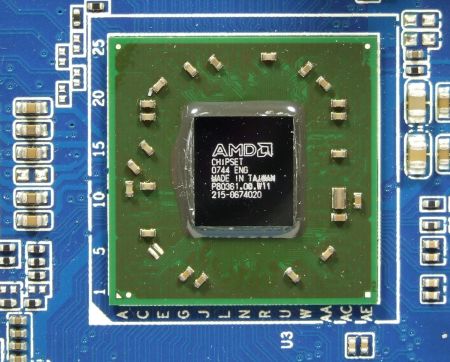
The new 780G northbridge
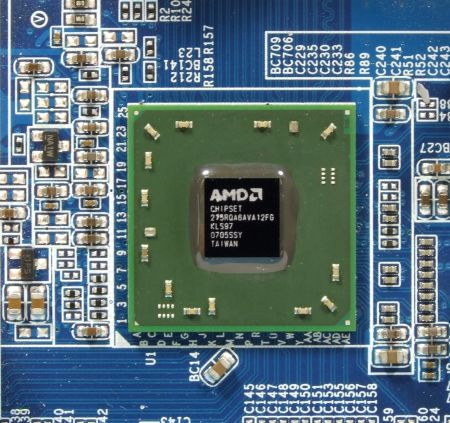
For reference - the northbridge of the 690G
Although the 780G northbridge (left) uses a smaller production process than the 690G northbridge (right), its die is larger, as it contains 133 million more transistors.
Even though the transistor count has almost tripled - growing from 72 million on the 690G to 205 million on the 780G - the northbridge heatsink is only slightly larger. This is possible because AMD has switched to a smaller production process, using 55 nm structures instead of 80 nm ones. This has allowed AMD to lower the power dissipation from 1.4 watts to 0.95 watts, while simultaneously integrating a more powerful graphics unit.
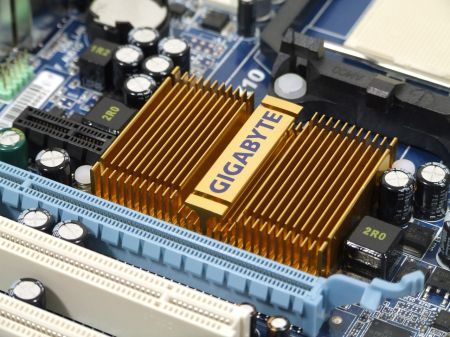
The flat cooler of the 780G northbridge.
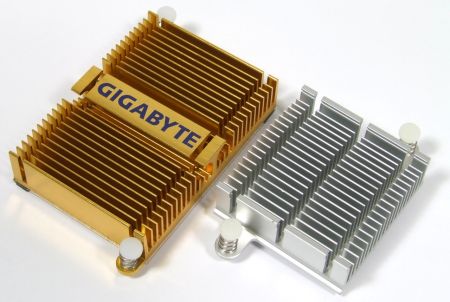
Size comparison between the coolers of the 690G and 780G Northbridge chips.
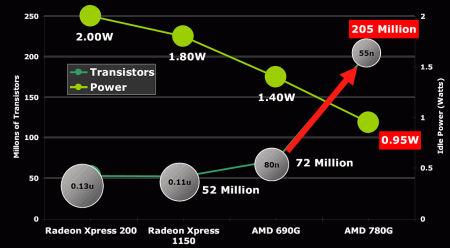
This chart shows the development of transistor count and power consumption.
Get Tom's Hardware's best news and in-depth reviews, straight to your inbox.
We compared the power consumption of the 780G board (Gigabyte GA-MA78GM-S2H) to that of a 690G board (Gigabyte GA-MA69GM-S2H) using identical hardware:
| Power Consumption Test - Hardware Configuration | |
|---|---|
| Component | Type |
| Processor: | Athlon X2 4850E |
| Memory: | 2 GB A-DATA DDR2-800 |
| CPU Cooler: | Box |
| Graphics Card: | Onboard |
| Blu-Ray-ROM: | LG GGC-H20L |
| HDD: | WD3200AAJS |
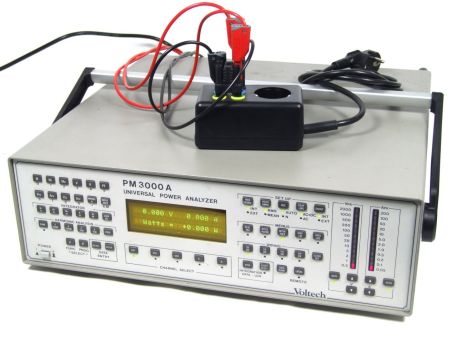
The Voltech PM3000A watt meter
All measurements were taken using a Voltech PM3000A power measuring device, with the processor idle and running at a reduced clock speed of 1000 MHz.
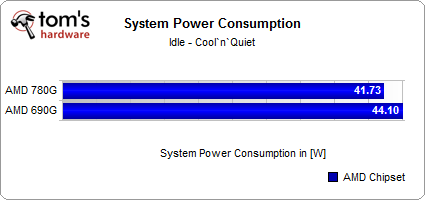
Although the transistor count of the Northbridge has increased from 72 million to 205 million, the 780G chipset draws about 2.37 watts less than its predecessor, the 690G. That translates to a 5.37% reduction in power consumption.
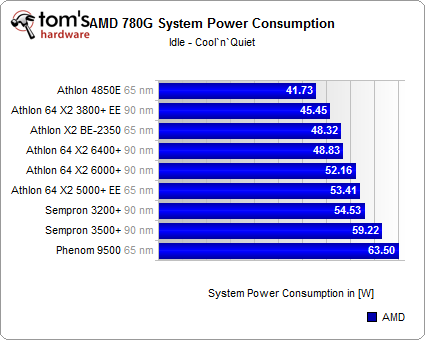
The wattmeter verified that the 780G-based system achieved a new power consumption record. Previously, only our own Solar Powered PC had been this frugal in the lab.
Current page: Power Consumption - 42 Watts When Idle At System Level
Prev Page Benchmark Analysis - 65% More Performance Through Hybrid-Crossfire Next Page Power Consumption - 73 Watts During Blu-ray Playback-
rockwell73 I would like to know can i run a video card with this mother board,with all the high demand for great video quality in these new video games such as Crysis, BioShock, Jericho and many others that require a high end video card how am i suppose to play these games without oneReply -
You just put in any PCI-E video card in the X-16 slot. With the appropriate processor and beefy enough video card, games are not a problem. The real beauty is that the onboard video is plenty for casual, older games at acceptable rates and also makes for a great low power HD media center computer.Reply
-
dotroy I do not get it, how come 2600XT is more faster than 3450 ? I thought 3450 is newer than 2600XT. Please explainReply -
gerro1977rm What about the northbridge overheating issue everyone is talking about? I've bought this board only to find out it has idle temps of 80C at the northbridge. I'm planning on buying an after market cooler to stabilize it.Reply -
gerro1977,Reply
What revision is your board? I just received this board and it's the new revision 1.1 which has a bigger heatsink (you can see the pictures from the gigabyte site for both revisions 1.0 and 1.1). I am getting my CPU soon and want to also check the northbridge temperatures. What can I use to measure the temps?
Thanks -
I'm cooling my G780 on GA-MA78GM-S2H rev1.0 with additional pentium 3 box coller heatsink (fits perfectly) and radeon 3450 with p3 box fan :) - it works fineReply
-
gerro1977rm Deleted Profile 06/23/2008 7;12 AM,Reply
Unfortunately, I'm using the rev 1.0 board. I fitted it with an HR05 heatsink from thermalright and its now just warm to the touch not hot. I'm using everest to monitor my temps. Aux now registers at 37 C, though I'm not really sure if its the NB temp. You can also use riva tuner among others. -
V3ctor I have a ASUS M3A78 EHM HDMI and I have a temperature of only 33ºc with my X2 BE-2350... I'm going tu put a HD3450, but i have a doubt... If i'm only in 2D graphics (like the desktop) the board switches to the HD3200? And when I need power does it "switch" to HD3450?Reply -
kingsize566 I have a GA780...DS3H rev1.0 (ATX) and the northbridge heatsink is large but made of some cheap light zinc alloy - waste of time IMHO, 70+ degrees and memory errors - but only when using a PCIex16 graphics card. The problem eased when I added a 40mm fan on top of the rubbish heatsink. I wrote to gigabyte about the issue, who said - tampering with the heatsink invalidates your warranty. Sounds like they're burying their head in the sand over the issue. According to some posts on SPCR, and here, the thermaltake HR05 replacement fits.Reply
I would question the QA process of a mobo manufacturer who offers not only a poor heatsink design, but a 4 phase mosfet unable to cope with the TDP of some of the higher power phenoms (see Tomshardware and Anandtech). The 780 board by XFX has a heatpipe solution on the mosfets and northbridge which looks like a better design, and similar price (cheaper if you count having to replace the deficient heatsink by Gigabyte). The Asus M3A78 possibly has a better heatsink on the northbridge.